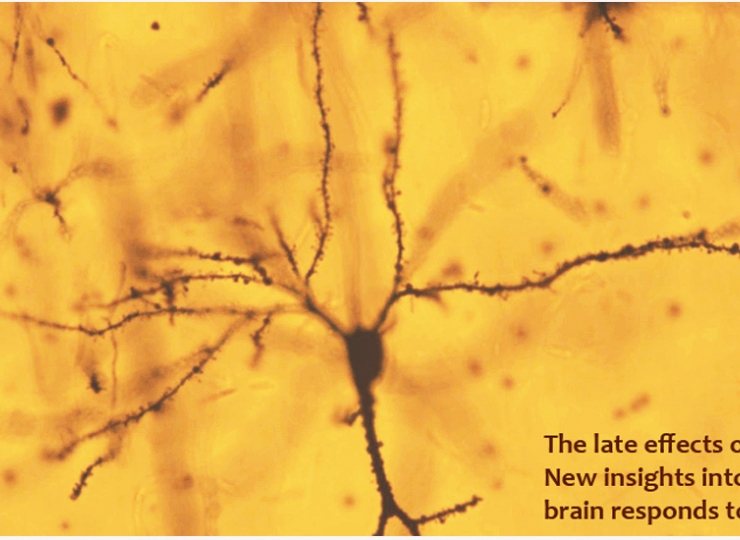By Anusha Krishnan
Water, an essential ingredient of life, permeates every aspect of an organism’s existence. With the loss of water, dehydration sets in – membranes break down, proteins unfold and cellular structure crumbles. Yet fungi such as yeast, and worms such as C. elegans, can survive extreme dehydration, known as dessication, by entering a state of suspended animation. Enduring dessication requires these organisms to pack their cells with a molecule named trehalose, which is a sugar made up of two glucose molecules. Trehalose not only preserves cell membrane and protein structures during dessication, it also protects cells against the severe stresses that can potentially tear apart cell components during rapid rehydration.
Though the steps in trehalose biosynthesis have been mapped, what remained unknown till now, was how cells redirect their energies towards making this protective molecule. Scientists from the Institute for Stem Cell Biology and Regenerative Medicine (inStem), India, and the Max Planck Institute of Molecular Cell Biology and Genetics (MPI-CBG), Germany, have identified the key metabolic pathway that organisms use to synthesise the trehalose that helps them survive dessication. The study, published in the in the journal eLife, shows that the well-known text-book pathway known as the ‘Glyoxylate Shunt’, is an essential metabolic conduit for directing resources into trehalose production.
In the growth phase, the chief metabolic processes in cells are focussed on generating energy and manufacturing material for reproduction. During this time, trehalose generation is unnecessary. However, when preparing to tide over environmental hazards such as dessication, cells need to funnel material and energy into synthesising trehalose. The Glyoxylate Shunt, known to exist in bacteria, fungi, protists, nematodes and plants, has now been shown to act as a powerful biochemical pathway to rewire and divert resources towards making molecules like trehalose. Therefore, when a cell needs to switch metabolic gears from a reproductive mode into a mode preparative to surviving dessication, this pathway provides a very important switch.
Although the Glyoxylate Shunt has long been known to operate in these organisms, especially in plants during seed germination, its physiological function remained elusive. “One of the most exciting things about this study is that we have shown that the Glyoxylate Shunt has an essential physiological function. It plays a crucial role in providing organisms with the protection they need to survive dessication,” says Sunil Laxman, one of the authors of the paper. The work is a collaborative initiative between Laxman’s group at inStem, Bangalore and Kurzchalia’s team at MPI-CBG in Dresden. The joint venture came about in a chance discussion between the two scientists early last year during Laxman’s visit to Dresden. Hypothesising that the principles of desiccation and the use of the Glyoxylate Shunt might be conserved across kingdoms of life, the researchers teamed up to prove their idea in two vastly different organisms – worms and yeast.
An important outcome of this research lies in stimulating future studies on the role of the Glyoxylate Shunt in drought resistance in plants. Alternatively, this work could also be useful in the field of cryogenic preservation. Apart from its importance in helping cells survive dehydration, trehalose has also been found to be beneficial in protecting cells during freezing and thawing. “My group is interested in understanding the molecular mechanisms of how the Glyoxylate Shunt is regulated, and how it co-ordinates with other metabolic pathways to balance various functions in the cell, especially under conditions such as dessication or freezing,” says Sunil Laxman. “Freezing exerts similar stresses on cell membranes as dessication does. Since trehalose also protects against cell injuries caused by freezing and thawing, our research can have very practical applications in biotechnology, especially in studying cryogenic survival,” he adds.
About the paper:
This study was a joint effort between inStem (Institute for Stem Cell Biology and Regenerative Medicine, Bangalore, India) and MPI-BCG (Max Planck Institute of Molecular Cell Biology and Genetics, Dresden, Germany), and has been published in the paper titled “The glyoxylate shunt is essential for desiccation tolerance in C. elegans and budding yeast” in May 2016 in the journal eLife.
The paper can be accessed here: https://elifesciences.org/content/5/e13614










